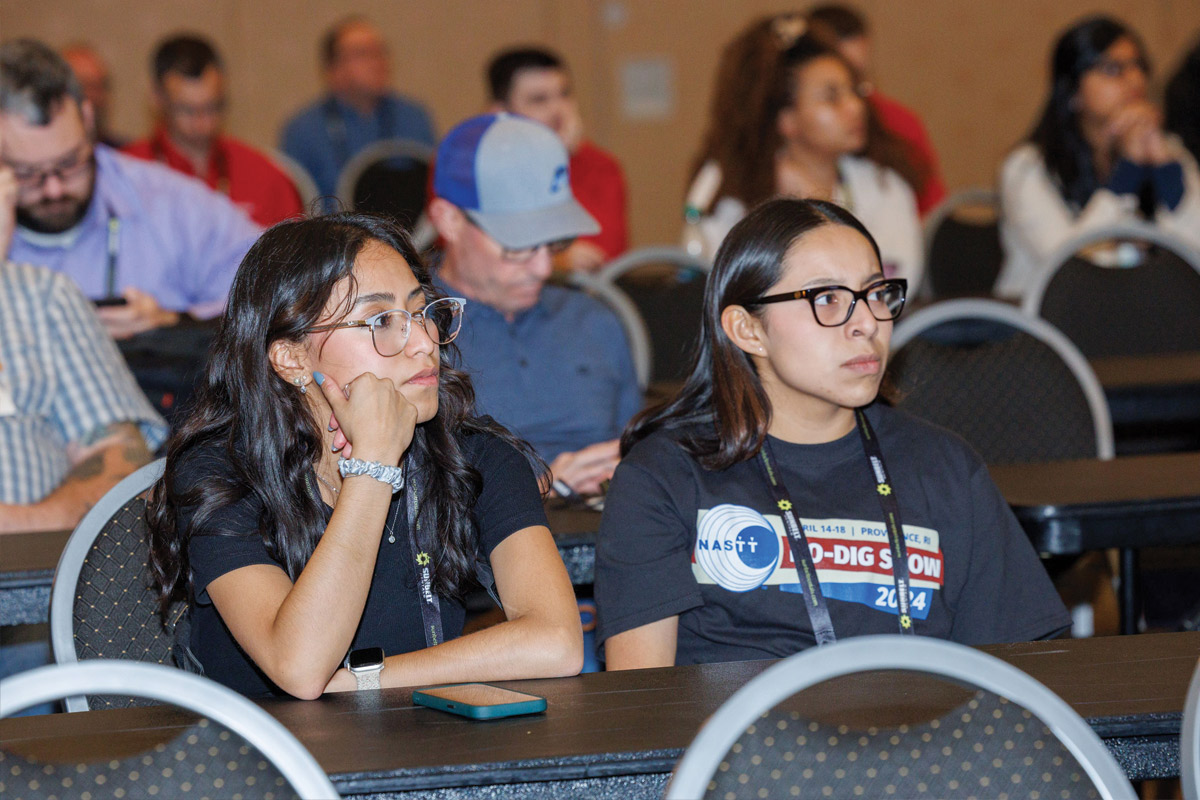
Crossing the Athabasca River in Canada
February 16, 2016
Long before a drill bit bores into the ground, a contractor’s experience and comprehensive planning process help to determine the probability for success on a boundary-stretching horizontal directional drill (HDD) project.Michels Canada Co. recently completed a challenging 7,200-ft (2,195-m) bore for the installation of a 42-in. pipe under the Athabasca River near Fort MacKay, Alberta, about 40 miles north of Fort McMurray. The 1.36-mile installation is a record length for 42-in. diameter pipe for Michels and considered to be one of the longest 42-in. installations done in the world.

Michels Canada Co. recently completed a challenging 7,200-ft (2,195-m) bore for the installation of a 42-in. pipe under the Athabasca River near Fort MacKay, Alberta.
The project has several unique elements that, when combined, made it an exceptional achievement in pipeline construction. As an international leader in HDD and trenchless construction, Michels has completed some of the longest and most challenging projects in the industry at a variety of diameters. Michels’ operational leadership team leveraged that experience when developing an effective strategy for completing the Athabasca River project. The crossing was one of seven 42-in. installations Michels is completing on TransCanada’s Northern Courier Pipeline Project, a 56-mile pipeline system that will transport bitumen and diluent products between a mine and bitumen extraction facility in Fort Hills to a tank farm near Fort McMurray.
The mammoth scale of the 42-in. project required Michels to tap into its abundant resources and technical knowledge. An initial design for a shorter crossing of about 6,000 ft was set aside because it would have required drilling in a sensitive area, as well as getting access close to the Athabasca River. Instead, the crossing was redesigned and extended to pass under both the Athabasca River and the mine site highway.
Due to the length of the alignment, the design utilized a pilot hole intersect method and then set up Michels’ 1.2 million-lb drill rigs on each side of the river for reaming operations.
The subsurface conditions were challenging as crews encountered geology that included oil sands, hard limestone, sandstone and siltstone. Michels utilized a variety of drilling tools and paid special attention to the engineer-designed drilling fluid program to manage the four substantially different formations. Both entry and exit side utilized surface casings to quickly reach more favorable formations. To ensure drilling accuracy, Michels used a combination of gyro steering and ParaTrack navigation tools for guidance with annular pressure monitoring.
Adhering to the designed drill path was as critical as it was demanding. Because the 42-inch pipe will contain a thermally grouted 24-in. pipeline, the installation needed to maintain specific gradients to adhere to the grouting plan.
The pilot hole was bored at 12 ¼ in. in diameter. Next, the hole was reamed in stages to the final diameter of 54 in.
Maintaining the path was one of several challenges. In addition to the HDD crew, Michels Canada provided pipe support and welding services.
Prior to pullback, the string was assembled and welded into one section and placed on rollers. Due to site limitations, the colossal pipe string was curved along 70 percent of its laydown length. To safely and efficiently handle the pipe, Michels utilized 10 cranes, five side booms and three excavators. The steep entry angle required the pipe-handling crew to hoist the pipe a soaring 47 ft into the air.
Michels Canada also worked with project owner, TransCanada, to ensure there was proper contingency for the pipe installation phase by utilizing one of Michels’ 1.2 million-lb drill rigs to pull and a 750-ton Herrenknecht Pipe Thruster at exit. Michels has utilized a similar contingency strategy on previous large-scale projects and, once again, it paid off. The pipe thruster was occasionally engaged to assist the pullback along the alignment. In fact, the pullback was challenging right from the start when a hefty 380,000 lbs of pull force was needed to achieve initial movement
Michels has completed trenchless installations in all environments, from some of the most densely populated to some of the most remote, and utilized that experience to prepare to work in the isolated northeastern Alberta area.
The 30-member crew stayed at nearby work camps, a necessary step to accommodate the 24/7 schedule. They encountered typical Alberta weather that ranged from highest near 90 F to lows of -4 F.
Keeping essential tools and supplies nearby was of critical importance, given the remote location and very limited options for receiving deliveries in a timely manner. In addition to determining which pieces of equipment, tools and supplies were necessary to begin construction, the Michels project management team also arranged to have adequate backup pieces on hand for immediate use should their need arise.
In the end, Michels’ planning and processes paid off. The installation was completed on schedule in November. In addition to accurately following the required alignment, the installation was completed without any lost-time injuries and without any inadvertent fluid releases along the environmentally sensitive crossing.
Jeff S. Mueller is Michels Directional Crossings Operational Manager. Patrick O’Donoghue is Michels Trenchless Crossings Manager.




